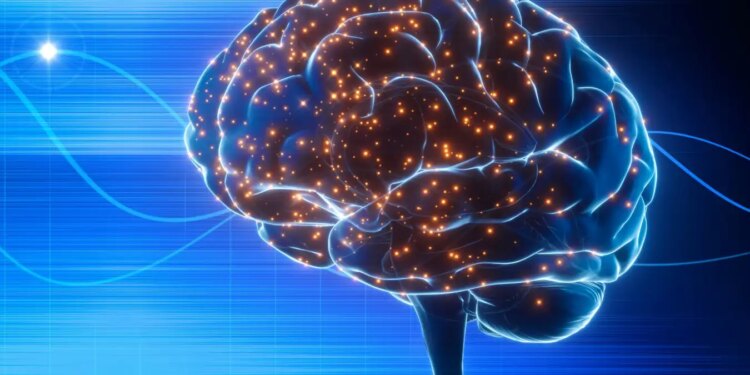
Ultrasound waves can penetrate the skull into the brain
Shutterstock/peterschreiber.media
Pulsing ultrasound waves through the brain could improve survival after a type of stroke by helping to clear out inflammatory dead blood cells, according to a study in mice. The approach, which enhances the effects of lymphatic drainage, could also treat Alzheimer’s disease, with a trial in people with the condition expected to start next year.
Haemorrhagic strokes, which make up about 15 per cent of all strokes, occur when a blood vessel in the brain ruptures, causing bleeding that disrupts the brain’s oxygen supply and damages its cells, often leading to problems with movement and cognition.
Treatment often involves sealing the broken vessel with a small metal clip, then clearing out dead red blood cells – via a catheter, for instance – that would otherwise increase inflammation and cause further tissue damage. But this is highly invasive, which can itself lead to brain damage and infections, says Raag Airan at Stanford University in California.
Airan wondered about the potential of ultrasound, administered in pulses outside the head, after he accidentally left such a device on for too long while using it to activate drugs in the brains of mice. “What I saw was that the spots of drug that I put in the brain were just like smeared out, like being transported further throughout the brain in a [cerebrospinal] fluid that usually clears gunk from the brain,” he says. “So I thought, ‘Can we actually use ultrasound to drive stuff out the brain?’”
To explore this, his team collected blood from the tails of mice and injected it into their brains, mimicking a haemorrhagic stroke. Over the next three days, the researchers pulsed ultrasound waves through the skulls of half the mice, for 10 minutes daily. The remaining animals received no treatment.
Next, all the mice completed a 3-minute test where they were placed in a tank with four corners, which allowed them to turn left or right. Healthy mice, with no movement or cognitive issues, usually turn each way 50 per cent of the time.
The researchers found that the mice in the ultrasound group turned left 39 per cent of the time, compared with 27 per cent of the time in the control group. They also found that the former mice could grip onto a metal bar more strongly than the control mice. This suggests that the treated animals had less brain damage, which the team later confirmed by analysing slices of their brains post-euthanasia.
One week after blood was injected into their brains, about half the mice in the control group had died, compared with a fifth of those in the ultrasound group. “We increased survival by about 30 [percentage points] with just three 10-minute sessions of ultrasound,” says Airan.
Further analysis revealed that the ultrasound pulses activated pressure-sensitive proteins on the animals’ microglia, immune cells in the brain, making them less inflammatory and enhancing their ability to gobble up and clear dead red blood cells. The pulses also increased the flow of cerebrospinal fluid through the brain, improving the clearance of any dead cells to lymph nodes in the neck. Part of the lymphatic system, these help dispose of the brain’s metabolic waste.
While further research is required, the approach could treat other brain conditions. “If ultrasound can drive clearance of red blood cells, which are fairly large, from the brain, it should be able to clear out toxic proteins that are much smaller, like [misfolded] tau, which contribute to conditions like Parkinson’s and Alzheimer’s disease,” says Airan.
“It’s a really impressive study with a tremendous potential for future translation, as it’s non-invasive,” says Kathleen Caron at the University of North Carolina at Chapel Hill. The lymphatic systems in mice and humans seem to be quite similar, so the approach could feasibly work in people, she says.
Ultrasound exposure is considered safe, so Airan is confident the treatment won’t have any unexpected side effects, although research is needed to confirm this.
The researchers hope to eventually test the approach in people who have had a haemorrhagic stroke, however, this requires urgent treatment. They therefore plan to gather more data on its safety and efficacy in people with Alzheimer’s disease, a progressive condition, with a trial due to start next year, says Airan.
Topics:
Source link : https://www.newscientist.com/article/2503750-ultrasound-may-boost-survival-after-a-stroke-by-clearing-brain-debris/?utm_campaign=RSS%7CNSNS&utm_source=NSNS&utm_medium=RSS&utm_content=home
Author :
Publish date : 2025-11-10 16:00:00
Copyright for syndicated content belongs to the linked Source.




